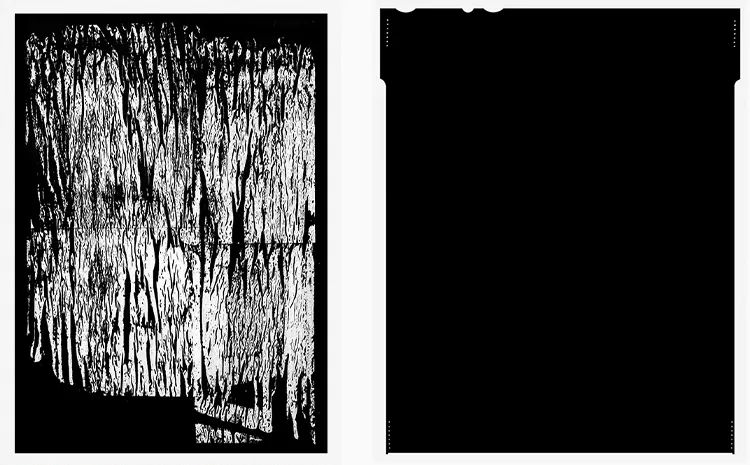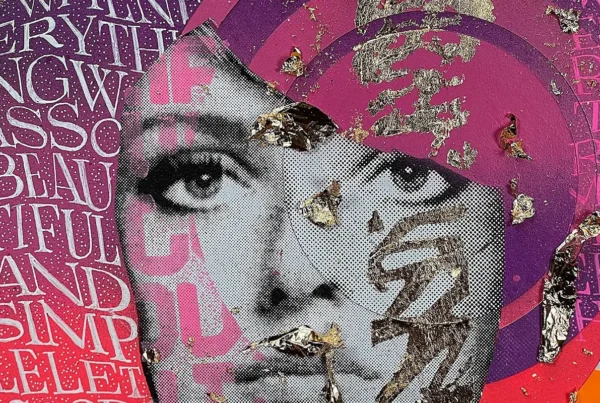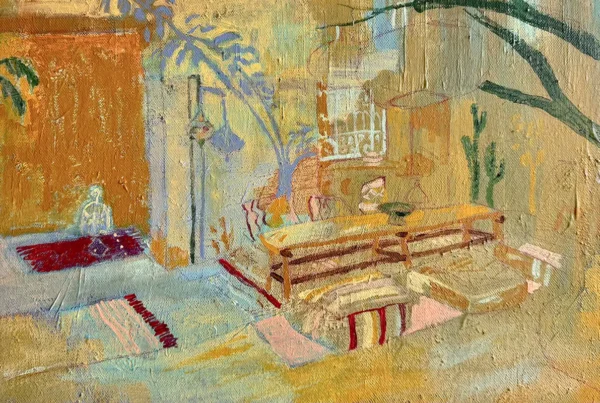“If I could sum this up in a line it would perhaps be an appreciation or acceptance of things just as they are.”
A Vision Unveiled: James Newton ‘s Evolution in Architecture and Photography
James Newton‘s formative years unfolded within the nurturing and stable environment of Birmingham. His familial lineage, devoid of artistic inclinations, nonetheless fostered an appreciation for creative pursuits. Over time, the dichotomy between his rational decisions and emotional impulses gave way to a harmonious blend, guiding him towards a fruitful artistic path.
Newton’s oeuvre reflects not so much the impact of his background as it does the imprints of his inherent personality traits. Characterized by a propensity for introversion and shyness, his artistic expressions tend towards introspection, their aesthetics rooted in quiet restraint. This understated demeanor should not be construed as a deficiency but rather as a reflection of Newton’s internal equilibrium.
Currently, Newton resides and operates in London, holding a steadfast commitment to his freelance photography career for over a decade and a half. His art, characterized by minimalism, abstract tendencies, and understated visuals, exudes a quiet yet potent strength. His inspiration emanates from the everyday, the unintentional, and the beauty inherent in these often overlooked facets of life. His work echoes his understanding of Wabi Sabi – the celebration of transience and imperfections within nature. Moreover, his fascination with Eastern philosophies and aesthetics, particularly Taoism and Buddhism, underscores his work. This influence encapsulates his acceptance and appreciation of things as they are.
Newton’s journey as a creator can be traced back to his earliest recollections of drawing and assembling Lego designs. This fervor for creation evolved into a meticulous approach to personalizing his surroundings. This creative process, enabled by his own hands, grants him a profound sense of gratification. For Newton, happiness is intrinsically linked with engaging in a continual creative process.
His creative influences span a broad spectrum, primarily gravitating towards abstract artists, with a particular resonance with Abstract Expressionism. Notable figures such as Barnett Newman, Robert Motherwell, Clyfford Still, and more recently, Helen Frankenthaler have left indelible imprints on his artistry. An exhibition by Jackson Pollock at the Tate (circa 1999) struck a chord with Newton, with its direct transference of energy from the artist to the canvas, then to the viewer, symbolizing a unique artistic language.
Newton’s aesthetics lean towards simplicity, stripping down art to its essential elements. Current influences include the monochromatic works of Ad Reinhardt, Richard Serra’s drawings and prints, and the oeuvre of Wade Guyton and Christopher le Brun. His artistic sphere also encompasses the realm of music, particularly long-form abstract compositions by Thomas Koner, Eliane Radigue, and recent discovery, Lisa Lerkenfeldt. This connection between visual and auditory stimuli, both temporal in nature, plays a significant role in his creative process. A particular record titled ‘Electro Nova’, created by Kare Delhi Thorstad during his photography studies, exemplifies this interplay. It substitutes visual elements with auditory ones, yet retains the essence of landscape and light. This unique blend of sensory experiences enriches the atmosphere of Newton’s studio, harmonizing the space with his creative energy.

Illuminating Spaces: The Artistry of James Newton’s Atmospheric Photography
A formidable aspiration to cultivate a personal project drove James Newton after his formal education at the esteemed Edinburgh College of Art. He initially embarked on a career in architectural lighting design, a tenure that spanned a decade. Yet, as he navigated this path, he discovered that his prowess unequivocally resided in the aesthetic facets of the profession, with a particular propensity for crafting presentations, renderings, and capturing the fruition of projects through photography.
Immersing himself in architectural magazines, including notable titles such as Architectural Review, Newton discovered a potent desire to capture the visual narratives within these periodicals, rather than conceiving the architectural projects themselves. This newfound passion gradually shaped his role within his existing firm, leading him toward professional architectural photography. Simultaneously, he nurtured a personal photographic journey, a project which he occasionally showcased at art expositions. Transitioning into full-time freelance architectural photography was, unquestionably, a significant milestone in his career, an ambitious leap.
Armed with an extensive background in light and lighting, Newton excels in his unique niche, specifically focusing on atmospheric elements of architectural projects. He aspires to encapsulate not merely the visual aesthetics but also the ambiance and the intangible elements of spaces. He understands that the nuances of lighting design subtly yet fundamentally influence the perception and behavior of space users.
Newton concurrently pursues a personal endeavour in the realms of photography and printmaking, a testament to his multifaceted talents. This practice has evolved organically, a career path carved by passion rather than deliberate planning. His recent commitment to dedicate more time to printmaking has ushered in an exciting phase in his career, earning him an artist in residence position at Buckinghamshire New University. In this role, he relishes the freedom to explore and enhance his craft, prioritizing the process of creation over the pressure for results.

Multifaceted Talents: James Newton’s Printmaking and Photographic Journey
James Newton is increasingly seeking to embrace a more process-led approach in printmaking. In the past, he would approach each project with a firm vision of the desired result, and the ensuing challenge lay in its flawless execution. This method, though often fruitful, inevitably led to instances of disappointment, as works could fall short of the preconceived ideal. To mitigate this, Newton is learning to let go of the concept of ‘wrong’ in prints, choosing instead to welcome the unforeseen and the accidental as part of his creative process. This change in methodology lends a liberating energy to his art, which frequently manifests itself in the finished pieces.
Newton is also interested in diverting the focus from himself as an artist and instead shining a light on the conditions and external influences that lead to the creation of his artworks. This emphasis on the impact of external forces, whether it be the hand imprints on a van or the remnants of removed bill posters, speaks to the notion of the ‘invisible craftsman’—an unseen agent contributing to the work’s creation.
Newton’s workspace is a hybrid of the digital and the tangible, encompassing computers, monitors, a scanner, printers, and a well-equipped physical workshop. He reserves space for an abundance of papers and tools necessary for crafting physical ‘book’ objects, all in the company of a burgeoning library filled with books by other artists he respects.
Newton’s creative process is typically a solitary endeavor, save for a day each week spent collaborating with his brother on their self-publishing project, Highchair Editions. The familiarity and trust between the siblings allow for the effective editing of each other’s work—an invaluable process that can be challenging when attempting to assess one’s own creations.
The tranquility of his workspace is occasionally punctuated by music, contingent upon his mood. However, silence has been claiming more of his creative hours of late. Distractions are managed effectively, as Newton maintains a strong sense of focus and discipline. His studio, as part of a larger community of artists and makers, provides a vibrant backdrop for his work, with the ambient sounds and activities serving more as positive influences than distractions.

Liberating the Unforeseen: James Newton ‘s Process-led Artistry and External Influences
James Newton’s artistic preference distinctly gravitates towards Malevich’s seminal artwork, ‘Black Square’. This artistic marvel initially captivated him through its austere visual appeal. The profound power exuded by its minimalistic composition, combined with an inherent sense of defiance, enthralled Newton. With the passage of time, he has come to deeply respect the conceptual radicalism that birthed this groundbreaking piece more than a century ago. Should the necessity arise to encapsulate the entirety of abstract art in a single visual representation, ‘Black Square’, he believes, would aptly fulfill this daunting task. Newton’s fascination with monochromes is palpable, and he derives immense pleasure from exploring the numerous avenues leading to a simple, unadorned surface. Despite Malevich’s final proclamation, Newton ardently believes that the creation of such works is far from over. In his perspective, ‘Black Square’ signified not the end of painting, but rather the glorious inception of abstract art.
Newton’s body of work reveals a pronounced inclination towards incorporating concepts of negative space, specifically ‘ma’ as conceived in the Japanese tradition, and the concept of nothingness. For him, books featuring blank pages, monochromatic canvases, and the silence within John Cage’s music, all bear significant meaning. However, he affirms that these all eventually trace their roots back to the iconic ‘Black Square’.
Long before embracing his role as a printmaker, Newton held a special fondness for prints. The unique allure of ink on paper consistently captivated his attention. When partaking in exhibitions, his interest invariably drifts towards works on paper, including drawings and photographs. Drawing from his background in photography, Newton perceives printmaking as an opportunity to craft exquisite physical prints or objects that, while photographically originated, diverge from the conventional associations of ‘photography’.
Newton also has a predilection for creating books, an endeavor that invites the exploration of various papers and printing techniques. This harmonizes the work and the book into one unified piece. He emphasizes that the practices of crafting prints and books straddle the realms of craft and art, asserting that their resonance depends on their quality of execution.
In the future, Newton aspires to collaborate on an architectural project with the express intention of generating a series of prints or a book. Such an undertaking would marry his passion for capturing light and surface in architecture with his adoration for print. This would facilitate a distinct perspective on the architecture, allowing him to focus intently on a singular element. Newton cherishes the hope that an ideal client would one day commission this dream project.






